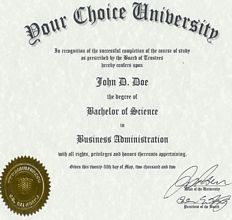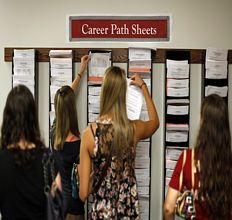Financial Aid Glossary (K – P)
When it comes to Financial Aid, Student
Loans, Scholarships and Grants, oftentimes you will come across terms,
acronyms and words that you’ve never heard of. To make defining them a simple process, the Student Loan Whiz has
provided a comprehensive list of the words and phrases you’ll need to be familiar with.
NO ADSENSE ACCOUNT SELECTED FOR
GOOGLE ADSENSE
Lender
A bank, credit union, savings & loan association, or other financial institution
that provides funds to the student or parent for educational loans. Duly note: Some schools now participate in the
Federal Direct Loan program and no longer use private lenders, since loan funds are provided by the US
Government.
Leveraging
If a school offers a talented student extra financial aid, regardless of need,
the student is more likely to enroll. Leveraging is the controversial practice of figuring out how much it will
take to attract such students and customizing aid offers to optimize the quality of the incoming class.
Life-of-Loan Servicing
The company that services the loan (the source of customer service
interaction with the borrower) does not change for the life of the loan. Life-of-loan servicing is not a guarantee
that the loan will not be sold from one lender to another, but rather that the same company that services the loan
will be used by the lender that acquires the loans.
Line of Credit
This is a pre-approved loan that lets you borrow funds up to a pre-set credit
limit, usually using a debit cars or by writing checks. A line of credit doesn't cost you anything until you write
a check, and then you begin repayment just like a regular loan. We advise all students to be careful when it comes
to these types of lines of credit. The balances can easily escalate beyond your ability to pay.
Loan
A type of financial aid that must be repaid, with interest. The federal student loan
programs (FFELP and FDSLP) are a good method of financing the costs of your college education. These loans are
better than most consumer loans because they have lower interest rates and do not require a credit check or
collateral. The Stafford Loans and Perkins Loans also provide a variety of deferment options and extended repayment
terms.
Loan Consolidation
See Student loan
consolidation.
Loan Discount
Federal law sets the maximum interest rates and fees charged on Stafford, PLUS
and Consolidation loans. Nothing prevents lenders from offering lower interest rates and fees. Many lenders offer a
variety of convoluted loan discounts, sometimes called borrower benefits, in order to attract potential
borrowers.
Loan Forgiveness
The federal government cancels all or part of an educational loan because
the borrower meets certain criteria (e.g., is performing military or volunteer service). See Student Loan Forgiveness.
Loan Interviews
Students with educational loans are required to meet with a financial aid
administrator before they receive their first loan disbursement and again before they graduate or otherwise leave
school. During these counseling sessions, called entrance and exit interviews, the FAA reviews the repayment terms
of the loan and the repayment schedule with the student.
Master's Degree
One of several degrees granted by graduate schools.
Matriculate
A student matriculates in college when he or she enrolls in college for the
first time. A student who just started the freshman year in high school will matriculate in four years. A newborn
baby will matriculate in approximately 17 years.
Maturity Date
The date when a loan comes due and must be repaid in full.
Merit-based
Financial aid that is merit-based depends on your academic, artistic or athletic
merit or some other criteria, and does not depend on the existence of financial need. Merit-based awards use your
grades, test scores, hobbies and special talents to determine your eligibility for scholarships.
Mortgage
A loan of funds for purchasing a piece of property that uses that property as
security for the loan. The lender has a lien on the property and will receive the property if the borrower fails to
repay the loan.
Multiple Data Entry Processor (MDE)
A company that processes the FAFSA forms submitted by
students. The College Scholarship Service (CSS) and PHEAA are both MDE Processors.
National Health Corps Scholarship (NHSC)
Scholarship program administered by the US
Department of Health and Human Services (HHS). It is available to medical students studying allopathic and
osteopathic medicine and to dental school students studying dentistry.
National Merit Scholarship Qualifying Test (NMSQT)
See PSAT.
National Service Trust
President Clinton's national community service program. If you
participate in this program before attending school, the funds may be used to pay your educational expenses. If you
participate after graduating, the funds may be used to repay your federal student loans. Eligible types of
community service include education, human services, the environment and public safety.
Need
The difference between the COA and the EFC is the student's financial need -- the gap
between the cost of attending the school and the student's resources. The financial aid package is based on the
amount of financial need. The process of determining a student's need is known as need analysis. It looks like
this, Cost of Attendance (COA) minus Expected Family Contribution (EFC) = Financial Need
Need Analysis
The process of determining a student's financial need by analyzing the
financial information provided by the student and his or her parents (and spouse, if any) on a financial aid form.
The student must submit a need analysis form to apply for need-based aid. Need analysis forms include (FAFSA) the
Free Application for Federal Student Aid and the Financial Aid PROFILE.
Need-Based
Financial aid that is need-based depends on your financial situation. Most
government sources of financial aid are need-based.
Need-Blind
Under need-blind admissions, the school decides whether to make an offer of
admission to a student without considering the student's financial situation. Most schools use a need-blind
admissions process. A few schools will use financial need to decide whether to include marginal students in the
wait list.
Need-Sensitive
Under need-sensitive admissions, the school does take the student's financial
situation into account when deciding whether to admit him or her. Some schools use need-sensitive admissions when
deciding to accept a borderline student or to pull a student off of the waiting list.
Net Income
This is income after taxes, deductions and allowances have been subtracted.
New Borrower
Also known as First-Time Borrower.
Nursing Student Loan (NSL)
A low interest loan administered by the US Department of Health
and Human Services (HHS) and available to students enrolled in nursing programs.
Origination Fee
Fees paid to banks to compensate them for the cost of administering the
loan. The origination fees are charged as the loan is disbursed, and typically run to 3% of the amount disbursed. A
portion of this fee is paid to federal government to offset the administrative costs of the loan.
Outside Resource
Aid or benefits available because a student is in school and is counted
after need is determined. Outside scholarships, prepaid tuition plans and VA educational benefits are examples of
outside resources.
Outside Scholarship
A scholarship that comes from sources other than the school and the
federal or state government.
Out-of-State Student
A student who has not met the legal residency requirements for the
state, and is often charged a higher tuition rate at public colleges and universities in the state.
Over Awards
A student who receives federal support may not receive awards totaling more than
$400 in excess of his or her financial need.
Packaging
The process of assembling a financial aid package.
Parent Contribution (PC)
An estimate of the portion of your educational expenses that the
federal government believes your parents can afford. It is based on their income, the number of parents earning
income, assets, family size, the number of family members currently attending a university and other relevant
factors. Students who qualify as independent are not expected to have a parent contribution.
Parent Loans for Undergraduate Students (PLUS)
Federal loans available to parents of
dependent undergraduate students to help finance the child's education. Parents may borrow up to the full cost of
their children's education, less the amount of any other financial aid received. PLUS Loans may be used to pay the
EFC. There is a minimal credit check required for the PLUS loan, so a good credit history is required. Check with
your local bank to see if they participate in the PLUS loan program. If your application for a PLUS loan is turned
down, your child may be eligible to borrow additional money under the Unsubsidized Stafford Loan program.
Pell Grant
A federal grant that provides funds of up to $2,340 based on the student's
financial need.
Perkins Loan
Formerly the National Direct Student Loan Program, the Perkins Loan allows
students to borrow up to $3,000/year (5 year max) for undergraduate school and $5,000/year for graduate school (6
year max). The Perkins Loan has one of the lowest interest rates and is awarded by the financial aid administrator
to students with exceptional financial need. The student must have applied for a Pell Grant to be eligible. The
interest on the Perkins Loan is subsidized while the student is in school. See Perkins Loan.
PhD
One of several degrees granted by graduate schools.
PLAN
A test taken in the fall of the sophomore year in high school as practice for the
ACT.
Poverty Line
The poverty guidelines, often referred to as the poverty line, are published
annually by the Department of Health and Human Services (HHS). They represent a simplification of the poverty
thresholds published annually by the US Census Bureau. The poverty line is more often used in federal student aid,
such as the income-based repayment and income-contingent repayment plans, as well as the economic hardship
deferment.
Prepaid Tuition Plan
A college savings plan that is guaranteed to rise in value at the same
rate as college tuition. For example, if a family purchases shares that are worth half a year's tuition at a state
college, they will always be worth half a year's tuition, even 10 years later when tuition rates will have
doubled.
Prepayment
Paying off all or part of a loan before it is due.
Primary Care Loan (PCL)
A low interest loan administered by the US Department of Health and
Human Services (HHS). It is available to medical school students pursuing medicine, osteopathy, dentistry,
veterinary medicine, optometry and podiatry. Undergraduate pharmacology students are also eligible. To be eligible
for this loan, you must commit to working in the field of primary care. It was formerly known as the Health
Professions Student Loan (HPSL).
Principal
The amount of money borrowed or remaining unpaid on a loan. Interest is charged as
a percentage of the principal. Insurance and origination fees will be deducted from this amount before
disbursement.
Private Loans
Education loan programs established by private lenders to supplement the
student and parent education loan programs available from federal and state governments.
Professional Degree
A degree in a field like law, education, medicine, pharmacy or
dentistry.
Professional Judgment (PJ)
For need-based federal aid programs, the financial aid
administrator can adjust the EFC, adjust the COA, or change the dependency status (with documentation) when
extenuating circumstances exist. For example, if a parent becomes unemployed, disabled or deceased, the FAA can
decide to use estimated income information for the award year instead of the actual income figures from the base
year. This delegation of authority from the federal government to the financial aid administrator is called
Professional Judgment (PJ).
Professional Student
A student pursuing advanced study in law or medicine.
Promissory Note
The binding legal document that must be signed by the student borrower
before loan funds are disbursed by the lender. The promissory note states the terms and conditions of the loan,
including repayment schedule, interest rate, deferment policy and cancellations. The student should keep this
document until the loan has been repaid.
Preliminary Scholastic Assessment Test (PSAT/NMSQT)
The PSAT is taken during the junior year as practice for the SAT. Scores on the PSAT are used to select
semi-finalists for the National Merit Scholarship program.
Brad Matheson is a professional Financial Consultant who specializes in helping businesses and individuals
resolve their debt issues. He believes that all debt problems can be solved with the right debt advice and aspires
to help Americans learn all of their debt options and exercise all of their rights. Says, Matheson, “Don't allow
the Student Loan Debt crisis or a Defaulted Student Loan to hinder or block
your career aspirations or stymie your financial dreams, There is Student Loan
Help available!”
Source: http://studentloanwhiz.com/
| 










